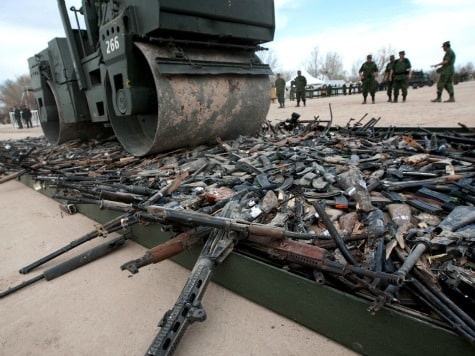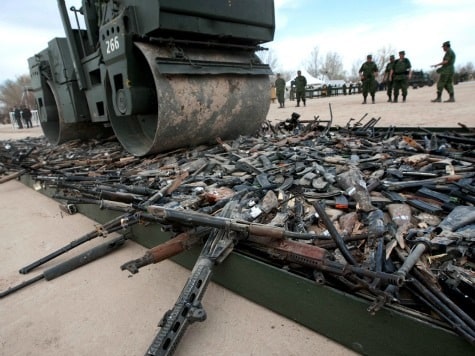Since the San Bernardino killings last week, many statements of politicians and stories in the media are painting a picture of “gun violence” in America that, on a closer look, appears to be far from reality.
These are some of the messages we hear in constant rotation: Be afraid of your neighbor who has a few guns and some boxes of ammunition; he must be planning a violent attack. Panic about the mass murders epidemic. Dread the explosion of violent crimes of recent years.
The barrage is deafening. But, should it be believed?
It is true people use guns to kill other people, including in mass murders. But, it is also important to not fall for exaggerated claims related to guns and mass murder.
Below are a few observations on guns and mass murder that should be considered when evaluating the fear-building messages that seem to be favored by many individuals in politics and the media:
- The Nation writer Jon Wiener reports in a Friday article that the “arsenal” of guns and ammunition Syed Farook and Tashfeen Malik owned is within the norm for millions of Americans. Contrary to what many stories in the media suggest, the fact that people possess such guns and ammunition in no way means they are planning to engage in a mass killing or terrorist act.
- Mark Follman, the national affairs editor at Mother Jones, writes in a Thursday New York Times op-ed that so far this year there have been four mass shootings, not the 355 claimed in the Washington Post or similar numbers asserted elsewhere in the media. The inflated numbers many media report, Follman explains, are created by broadening the definition of mass shooting far beyond the historical categorization focused on the indiscriminate-killing-motivated murder of four or more people in a public venue that Follman and his Mother Jones colleagues employ.
- John R. Lott, Jr., in his Fox News column on Thursday tallies that public shootings of four or more people — excluding those “that might be better classified as struggles over sovereignty” — in the United States and Europe. He concludes that, during the period from 2009 through the middle of June of this year, the US ranks, after adjustment for the respective countries’ population sizes, eighth for the mass public shooting death rate and ninth for the frequency of attacks.
- Heritage Foundation Policy Analyst Jason Snead relays in a November 12 commentary Federal Bureau of Investigation (FBI) statistics indicating a 37 percent drop in violent crimes and 39 percent drop in murders over the twenty years from 1994 to 2013. Snead further relays Department of Justice numbers indicating that over the years spanning from 1993 to 2011 there was a 39% reduction in firearm-related homicides.
- Radley Balko notes in a July of 2014 Washington Post article that, in 2013, “47.3 percent of those convicted for federal gun crimes were black — a racial disparity larger than any other class of federal crimes, including drug crimes.” Balko proceeds to mention a United States Sentencing Commission finding that black people are more likely than white people to be subjected to US gun crime mandatory minimum sentences and weapon possession “enhancement” penalties. This may come as a surprise to many individuals who are pushing for new gun laws and stricter enforcement of existing gun laws. Ominously, criminal justice reform legislation with powerful bipartisan backing in the US Congress proposes increasing maximum criminal penalties related to guns.
Be cautious of tales spread in times of heightened fear. These tales are often spun for the purpose of converting fear into support for expansions of government powers that the communicators have long supported but could not implement in calmer times. Though it may be difficult when fear is burning all around you, give a try to stepping back, taking a breath, asking questions, and looking for alternative viewpoints. You just may find that the people promoting the fear are the ones who pose the greatest danger.


